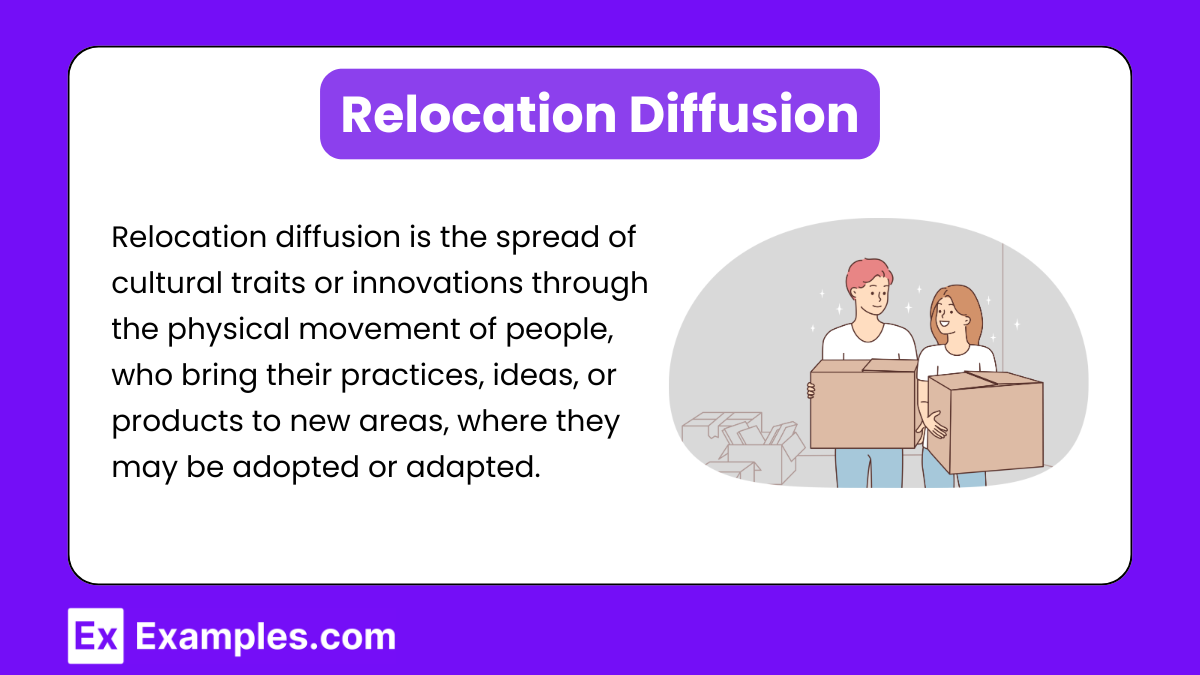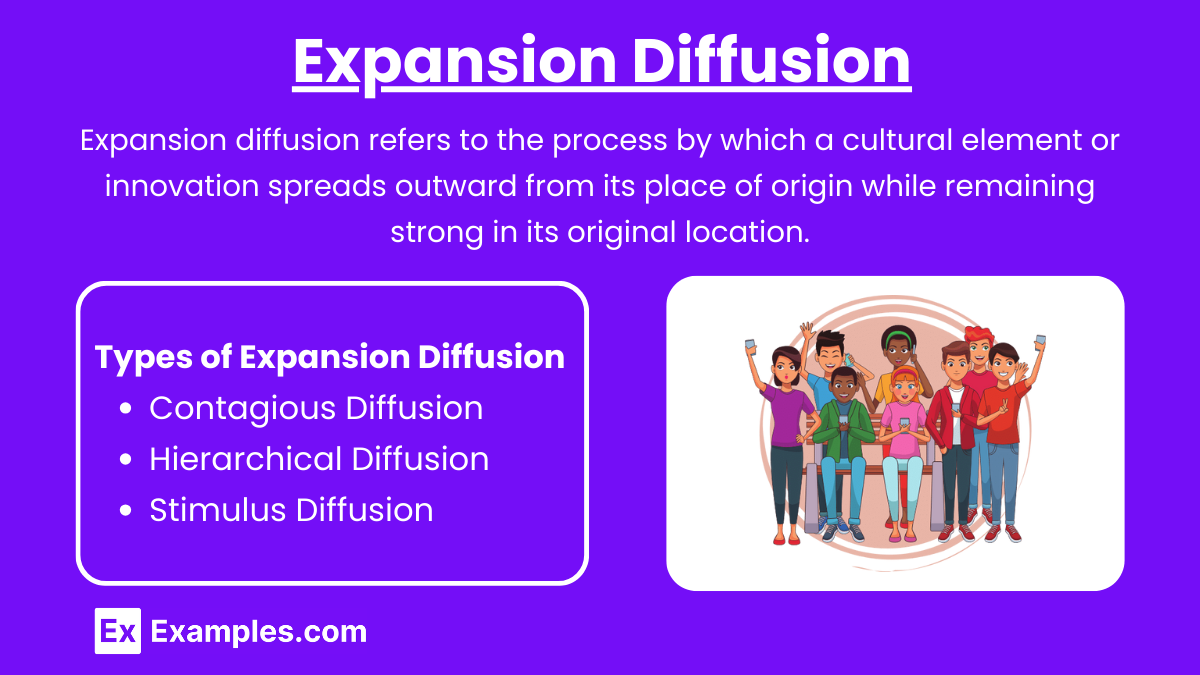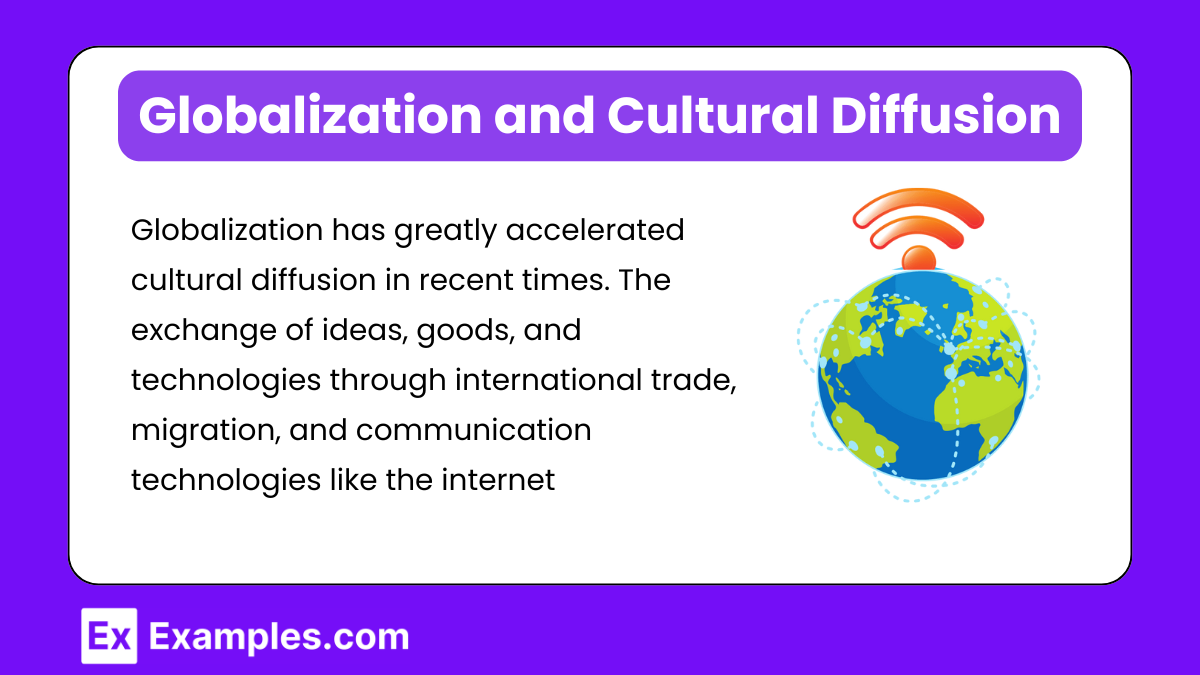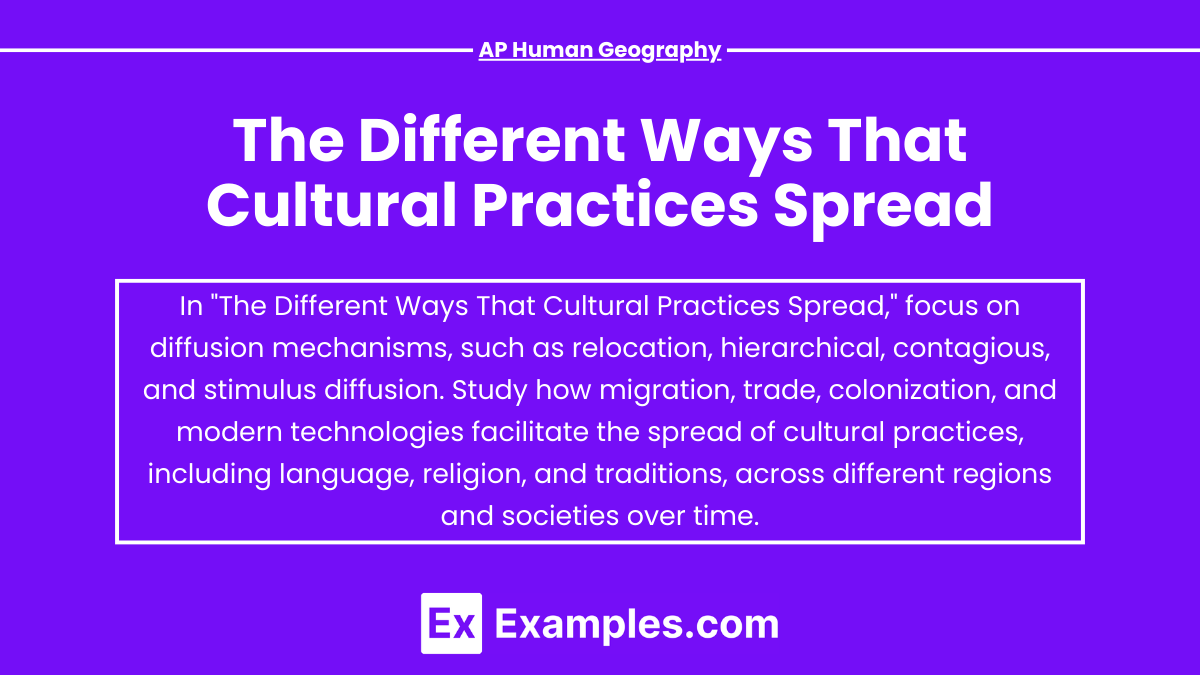In AP Human Geography, understanding the spread of cultural practices is crucial for analyzing human interactions and landscapes. Cultural diffusion occurs in several ways, such as relocation diffusion, where people move and bring their culture to new places, and expansion diffusion, which includes contagious, hierarchical, and stimulus diffusion. Globalization accelerates the process, allowing cultural ideas and innovations to cross borders rapidly. Despite this, cultural barriers may slow diffusion, resulting in modification. Recognizing these processes helps explain how cultures interact and influence the world.
Learning Objectives
In studying “The Different Ways That Cultural Practices Spread,” you should aim to understand the various mechanisms of cultural diffusion, including relocation, expansion, contagious, hierarchical, and stimulus diffusion. Focus on identifying real-world examples of each diffusion type and analyzing the factors that influence the spread of cultural practices, such as technology, globalization, migration, and historical contexts like colonization. Additionally, explore the impact of cultural diffusion on societies and the ways it leads to cultural blending or cultural conflict.
In AP Human Geography, understanding how cultural practices spread is crucial to grasping global patterns of culture and interaction. Cultural diffusion refers to the process by which cultural elements—such as beliefs, practices, technologies, and language—spread from one society or culture to another. There are three main types of cultural diffusion: relocation diffusion, expansion diffusion, and stimulus diffusion.
1. Relocation Diffusion

Relocation diffusion refers to the spread of a cultural trait or innovation through the physical movement of people from one place to another. As individuals or groups migrate, they carry their cultural practices, ideas, or products with them, introducing these elements into new regions where they may be adopted or adapted.
Example: The spread of languages like Spanish, English, and French to the Americas is a classic example of relocation diffusion. European colonizers brought their languages and cultural practices with them during exploration and colonization, which have since become dominant languages in many regions of the Western Hemisphere.
2. Expansion Diffusion

Expansion diffusion refers to the process by which a cultural element or innovation spreads outward from its place of origin while remaining strong in its original location. This spread happens through interactions and communication, without the need for people to physically relocate. This type of diffusion involves the spread of cultural traits in a way that the number of people influenced by it continuously grows while the practice remains strong in its place of origin. Expansion diffusion can be broken into several subtypes:
Example is the adoption of smartphones. Initially developed and popularized in specific regions (like the U.S. and Europe), smartphones rapidly spread to other parts of the world. The technology continued to evolve in its place of origin while gaining popularity globally.
- Contagious Diffusion: This refers to the rapid, widespread diffusion of a cultural trait or innovation throughout a population. It resembles the way a virus spreads. Social media trends and viral content are modern examples of contagious diffusion, where cultural elements quickly spread from person to person without the need for physical relocation.
- Hierarchical Diffusion: In hierarchical diffusion, cultural traits spread from a place or person of power or authority to other individuals or places. It often follows a pattern from large, important areas to smaller ones, or from leaders to followers. For example, fashion trends or technological innovations often spread first among urban elites and then filter down to the wider population.
- Stimulus Diffusion: Stimulus diffusion occurs when the underlying idea or concept spreads, but the specific trait or practice does not. For instance, McDonald’s adapting its menu to suit local tastes in different countries represents stimulus diffusion—while the concept of fast food spreads, the specifics are tailored to the region’s culture.
3. Cultural Barriers and Modification
Though diffusion occurs in various ways, cultural practices may encounter barriers that can slow or prevent their spread. These barriers can be physical (mountains, oceans), political (borders, regulations), or social (language differences, cultural resistance). Additionally, when cultural practices are adopted in new regions, they are often modified to align with local customs and preferences.
4. Globalization and Cultural Diffusion

Globalization has greatly accelerated cultural diffusion in recent times. The exchange of ideas, goods, and technologies through international trade, migration, and communication technologies like the internet has made cultural practices spread more rapidly and widely than ever before. This has led to phenomena such as cultural homogenization (the blending of cultures) and cultural hybridization (the combination of different cultural elements to form new practices).
Examples
Example 1: Relocation Diffusion – The Spread of Italian Cuisine
As Italian immigrants moved to different parts of the world, particularly to places like the United States, they brought their food culture with them. Today, Italian dishes such as pizza and pasta have become global staples, especially in cities like New York and Chicago, blending into the local cuisine while maintaining their distinct origins.
Example 2: Contagious Diffusion – The Popularity of K-Pop
Korean pop music, or K-pop, began in South Korea but spread rapidly across the globe, especially through the internet and social media. Fans in countries all over the world picked up K-pop trends, songs, and fashion styles, creating an almost viral-like spread of this musical culture across different societies, particularly among younger generations.
Example 3: Hierarchical Diffusion – Fashion Trends from Paris
Major fashion trends often start in global fashion capitals such as Paris, New York, and Milan. For instance, high-end fashion houses introduce new styles during fashion week, which then influence designers and stores worldwide. Over time, these styles trickle down to more affordable brands and spread to smaller cities and rural areas.
Example 4: Stimulus Diffusion – McDonald’s in India
McDonald’s adapted its menu to fit local cultural preferences in India, where beef is avoided by many due to religious reasons. Instead of traditional beef burgers, McDonald’s introduced chicken and vegetarian options like the McAloo Tikki, showing how cultural practices are modified to suit local preferences while retaining the global brand identity.
Example 5: Expansion Diffusion – The Spread of Islam
Islam began in the Arabian Peninsula but spread rapidly through both contagious and hierarchical diffusion. As traders, military campaigns, and missionaries expanded Islamic influence, the religion grew across North Africa, Europe, and Asia. This spread didn’t dilute the presence of Islam in its hearth (Mecca), but it expanded to new areas while retaining strong roots in its origin.
Multiple Choice Questions
Question 1
Which of the following best describes hierarchical diffusion?
A) The spread of a cultural trait through the physical relocation of individuals.
B) The rapid spread of cultural traits to everyone, regardless of status or location.
C) The spread of a cultural trait from a person or place of authority to other people or places.
D) The adoption of an underlying idea while the original trait is modified to fit local culture.
Answer: C) The spread of a cultural trait from a person or place of authority to other people or places.
Explanation: Hierarchical diffusion occurs when cultural practices or innovations spread from higher authority figures or influential places (such as cities or leaders) to less influential places or people. For example, fashion trends often start in major urban centers or with celebrities before being adopted by the broader population. Option A refers to relocation diffusion, B to contagious diffusion, and D to stimulus diffusion.
Question 2
Which type of diffusion is characterized by the widespread and rapid transmission of cultural practices or traits through a population?
A) Relocation diffusion
B) Stimulus diffusion
C) Contagious diffusion
D) Hierarchical diffusion
Answer: C) Contagious diffusion
Explanation: Contagious diffusion is when a cultural practice or trait spreads rapidly and uniformly throughout a population, much like a viral trend. It does not rely on status or physical movement, but rather direct contact between people, like the spread of ideas through social media. Relocation diffusion involves movement of people, stimulus diffusion involves adaptation, and hierarchical diffusion is more selective, starting with authority figures or centers of influence.
Question 3
An example of stimulus diffusion would be:
A) The introduction of soccer to the United States by European immigrants.
B) The spread of Buddhism from India to East Asia, where it blended with local traditions.
C) The adaptation of fast food menus to local tastes in different countries.
D) The migration of people who bring their religious practices to new regions.
Answer: C) The adaptation of fast food menus to local tastes in different countries.
Explanation: Stimulus diffusion occurs when the underlying idea or concept spreads, but specific elements are altered to fit the new context. In this case, fast food chains like McDonald’s adapt their menus in different countries to match local tastes. Option A represents relocation diffusion, B is an example of syncretism (a blending of religious or cultural practices), and D refers to relocation diffusion.


